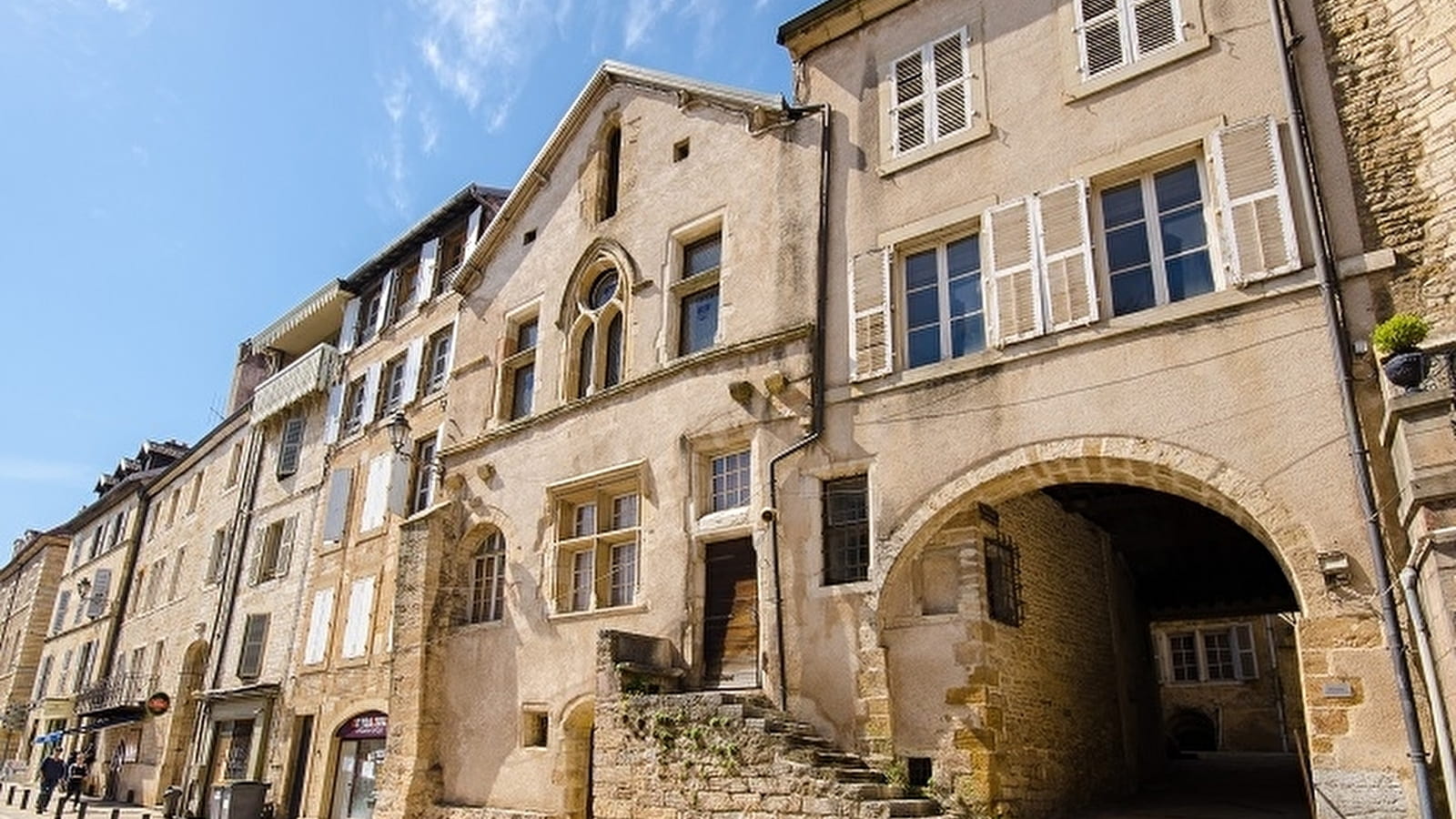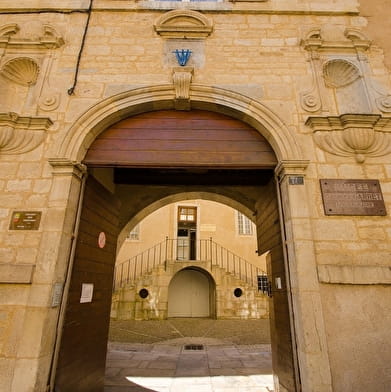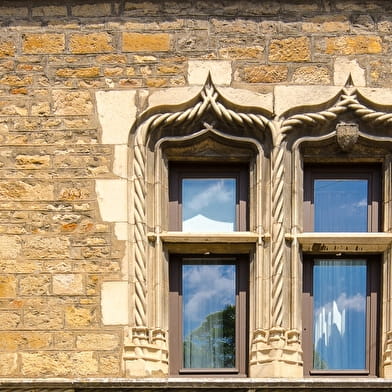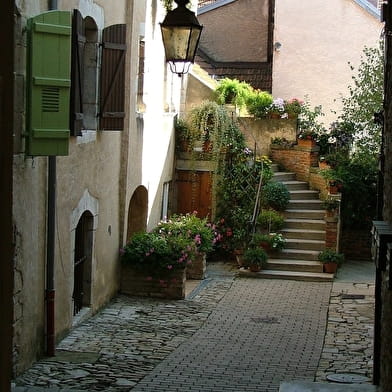
Centre ancien de Vesoul
Vesoul through the centuries
The Motte is a major feature of the Vesoul landscape. Once an integral part of the limestone plateau to the east of the town, the Motte hill (380m) was separated from it during geological upheavals (Quaternary era) which allowed water to seep into the faults and open up a gap where the Durgeon rushed in. Over the millennia, the patient work of the living waters isolated the Motte hill, an exemplary mound of the ancient relief, dominating the landscape opened by the Durgeon valley. It is currently crowned by an oratory and a chapel, built to thank the Virgin for having protected the town from the cholera epidemic in 1854.
The Middle Ages
As early as the High Middle Ages, the Motte hillock was crowned by a castle of great strategic importance. It was on the lower slopes that the first houses that gave birth to the town were built, while the vineyards covered the sunny slopes. Vesoul, then surrounded by ramparts, is known for its fairs, its commercial and judicial activity. The wine of La Motte was very appreciated by the Dukes of Burgundy.
The Renaissance
After the destruction of the valley at the end of the 15th century, Vesoul experienced a period of prosperity in the following century. As an administrative and craft centre, it also became one of the most important wine-producing towns in the region.
The town was rebuilt around the Church of Saint Georges and beautiful houses were built on a still medieval model, that of the rectangular house flanked by a stair turret. They are decorated with fine decorations borrowed from the Gothic vocabulary.
The Age of Enlightenment
In the 18th century, the Haute Saône experienced a period of strong economic and demographic development. The villages rebuilt their churches and public buildings. Vesoul, at this time, experienced the greatest expansion in its history. The population quadrupled and the town took on a new face.
The rich bourgeois modernized the old family houses by building new private mansions with elegant symmetrical facades.
To allow the city to breathe, the streets were widened, fountains were built and squares were laid out. With more than 40 lawyers, Vesoul was a very important judicial centre.
The XIXth century
The 19th century saw Vesoul enter the industrial era. Its activities evolved: in the middle of the century, the railways placed the town at the centre of an important railway network, of national and local interest.
Industries settled around the city centre. The suburbs developed around the historic centre, which was always preserved.
Vesoul was then a peaceful administrative and commercial town, home to the 11th Chasseurs Regiment. At the time, it was proud of its tranquillity and quality of life.
The 20th and 21st centuries
In the 20th century, Vesoul experienced a strong expansion in the 1950s and 1960s, with the arrival of the Peugeot factory and the construction of new districts. In the decades that followed, the town developed, renovated and equipped itself with community facilities in the fields of culture, sports and leisure. The city extends and diversifies its activities, within an agglomeration of nearly 32,000 inhabitants.
The architecture of Vesoul
Limestone is the main material used for Vesulian buildings. A beige and blue limestone cohabits with a reddish ferruginous limestone.
These stones are used to create sober, solid, but nevertheless elegant houses. Having been destroyed several times before the 16th century, Vesoul has always preferred solidity to fantasy. This is evidenced by the Latin motto written on a porsche "moderata durant" (what is moderate lasts). Wood is also very present in the buildings, most often in the backyards.
The emblematic places of Old Vesoul
The place of the Law Courts
This is where the market hall of Vesoul was located. Destroyed at the end of the 18th century to create a square, it was replaced by the current Law Courts. The construction of the latter was the starting point for the creation of an architectural ensemble, composed of the Palais de Justice, the Pétremand Hotel, and the Salives Hotel.
Pure and symmetrical forms, elegance and sobriety of the facades are the main characteristics of this remarkable ensemble.
The church of Saint-Georges
The church of Saint-Georges is a very interesting example of early 18th century religious architecture in the Haute Saône. Following the model of the hall-church, in vogue at that time, the interior vaults are all situated at the same height. If the exterior of the church is striking for its originality, the interior is remarkable for its decoration: the apse, decorated with superb rocaille woodwork, responds to the 3336 pipes of the great organ, one of the most powerful in the region.
Throughout the chapels, the different eras cross and reveal themselves: Medieval Pièta, Tombstone, Renaissance, Baroque Glory, or Saint Sebastian by Gustave Courtois.
The Place de la République
Extended by the Allées and the Halles, this square illustrates the development of the city in the 19th century; vast, airy spaces, allowing the holding of fairs and markets. The Halles, covered with a Polonceau-type framework, innovative for the time, are a reminder of the long tradition of market gardening and cereal growing around Vesoul. Not far away, the English Garden, classified as a Remarkable Garden, shelters rare species along its winding paths.
Brochures Bourgogne Tourisme
Consult our brochures online or order them to receive at home







